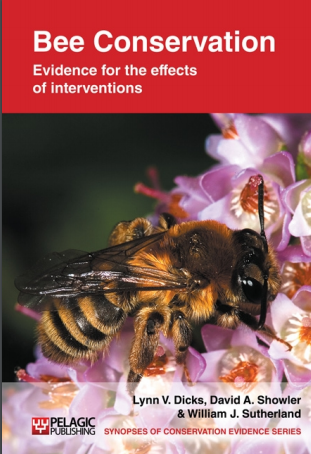Convert to organic farming
-
Overall effectiveness category Awaiting assessment
-
Number of studies: 8
View assessment score
Hide assessment score
How is the evidence assessed?
-
Effectiveness
not assessed -
Certainty
not assessed -
Harms
not assessed
Study locations
Supporting evidence from individual studies
Belfrage et al. (2005) counted bumblebees Bombus spp. on six organic and six conventional arable farms in Roslagen, southeastern Sweden. They found no significant difference in the numbers of bumblebees between the two farm types.
Study and other actions testedA comparison of organic and conventional canola (oilseed rape Brasscia sp.) fields in Canada found a significantly greater abundance of wild bees in organic fields (averages 86 bees per organic field sample, 58 bees per conventional field; Morandin & Winston 2005).
Study and other actions testedA comparison of 21 organic and 21 conventional winter wheat fields in northern Germany found a greater abundance and diversity of wild bees on organic fields than on paired control fields (Kleijn et al. 2006, Holzschuh et al. 2007). Average bee species richness per field was 6.9 for organic fields and 2.1 species for conventional fields. 1,326 individuals of 31 bee species (average abundance 63.1) were recorded in organic fields compared to 181 individuals of 16 species (average abundance 8.6) in conventional fields.
Additional Reference
Holzschuh A., Steffan-Dewenter I., Kleijn D. & Tscharntke T. (2007) Diversity of flower-visiting bees in cereal fields: effects of farming system, landscape composition and regional context. Journal of Applied Ecology, 44, 41-49
Study and other actions testedIn the same study, the total number of bee species was higher under organic farming whether you considered the number found at individual sites, the total number found in each region or the total for the entire study (Clough et al. 2007). Diversity between sites as well as within sites was greater for organic fields than for conventional fields. This means bee diversity improved under organic wheat farming at the larger landscape level, as well as the local level.
Study and other actions testedAlso in the same study, Holzschuh et al. (2008) report higher bee abundance and diversity on permanent fallow strips next to organic winter fields, compared to fallow strips next to conventional wheat fields. On average, 2.6 m wide annually mown fallow strips next to organic fields had 6.3 bee species, 8.5 bumblebee individuals and 2.6 solitary bees/100 m in total over four surveys, compared to 4.0 species, 3.7 bumblebees and 1.1 solitary bees/100 m on strips next to conventional fields.
Study and other actions testedA study of 15 organic and 40 conventional arable field boundaries in Finland found no significant difference in the numbers of bumblebees or bumblebee species (Ekroos et al. 2008). On average, three bumblebees from 1.1 species were recorded per transect on conventional farm field boundaries, and 3.8 bumblebees from 1.4 species on organic farm field boundaries.
Study and other actions testedRundlöf et al. (2008) surveyed bumblebees Bombus spp. on 12 pairs of organic and conventional farms in Sweden, and found significantly more bumblebees and bumblebee species on organic than conventional farms (on average 7.7 and 4.9 species/farm on organic and conventional farms respectively). This difference between organic and conventional farms was not statistically significant when only the six pairs of farms in heterogenous (mixed) farming landscapes, with smaller field sizes and more grassland, were considered. So organic farming had a greater effect on wild bumblebees in intensive, homogenous arable landscapes.
Study and other actions testedWinfree et al. (2008) surveyed wild solitary and social bees visiting flowering crops on 22 or 23 farms, of which six or seven were organic and 16 conventional, in Pennsylvania and New Jersey, USA. Organic and conventional farms did not differ in field size, crop diversity or wild/weedy plant diversity and all lay in a heterogeneous landscape with many small patches of natural habitat such as woodland. They found no difference in either the abundance or species richness of bees between organic and conventional farms.
Study and other actions tested
Where has this evidence come from?
List of journals searched by synopsis
All the journals searched for all synopses
This Action forms part of the Action Synopsis:
Bee Conservation
Bee Conservation - Published 2010
Bee Synopsis





)_2023.JPG)














